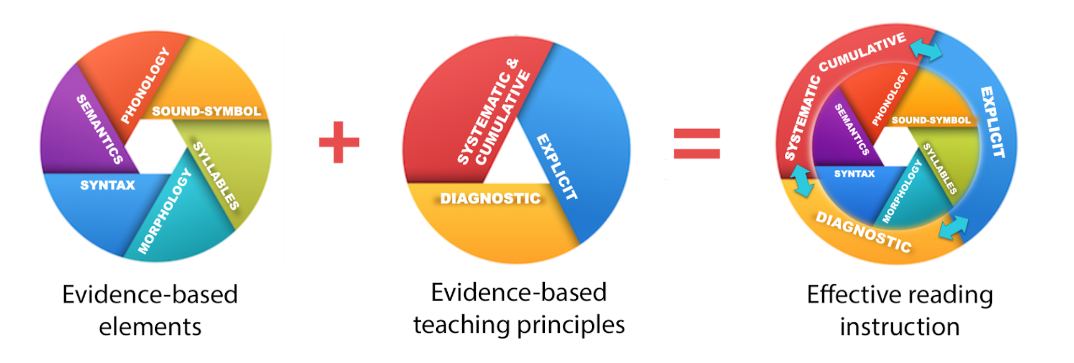How to Use Evidence-Based Principles for Effective Reading Instruction

Harnessing the Science of Reading in Literacy Instruction
It’s important for educators to infuse the science of reading into their reading instruction. One way educators effectively do this is by using the structured literacy approach.
The combination of evidence-based elements and evidence-based teaching principles results in effective reading instruction.
The structured literacy approach takes overarching components of reading and combines them with evidence-based teaching principles. These principles can be broken up into three categories: explicit, systematic & cumulative, and diagnostic.
3 Evidence-Based Principles for Effective Reading Instruction
1. Explicit Teaching
Explicit teaching is directly and intentionally teaching a skill to students with continuous teacher-student interaction. This is done with the assumption that the concept you are teaching is not something students will naturally pick up on their own. Explicit teaching is clear-cut, direct, and very teacher-centric.
2. Systematic & Cumulative
When a curriculum is systematic, it considers progression, sequencing, and flow from lesson to lesson. A systematic curriculum orders lessons in a way that follows the logical order of language. Lessons should progress with difficulty over time. Cumulative programs build on each lesson or concept as students progress, adding to their foundation with each lesson.
3. Diagnostic
In a program that focuses on being diagnostic, ongoing assessment is key. The assessments can be both formal and informal but should ultimately monitor students’ skills and progress frequently. The diagnostic aspect is incredibly important because it allows teachers to see where their students are performing in order to help them differentiate concepts and teach students at their current level.
Understanding the evidence-based teaching principles and how they work allows educators to align their classroom instruction with successful best practices. If you missed our first blog in this series, visit “3 Things to Know About the Science of Reading.”
Hear directly from Istation’s experts on the science of reading in our on-demand webinar “Putting the Science of Reading into Practice.”
Read more from the AI & The Reading Brain Blog


.avif)





